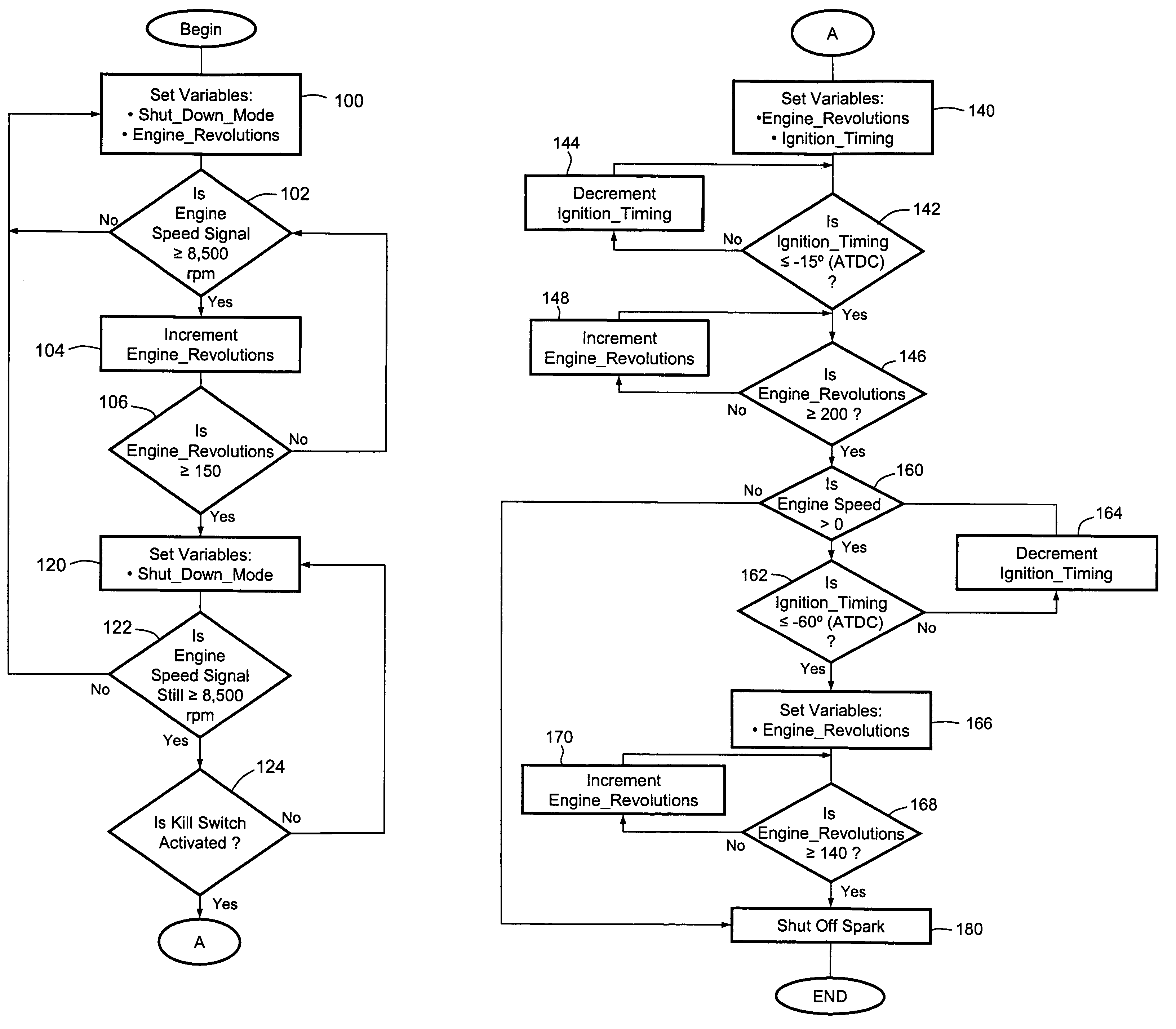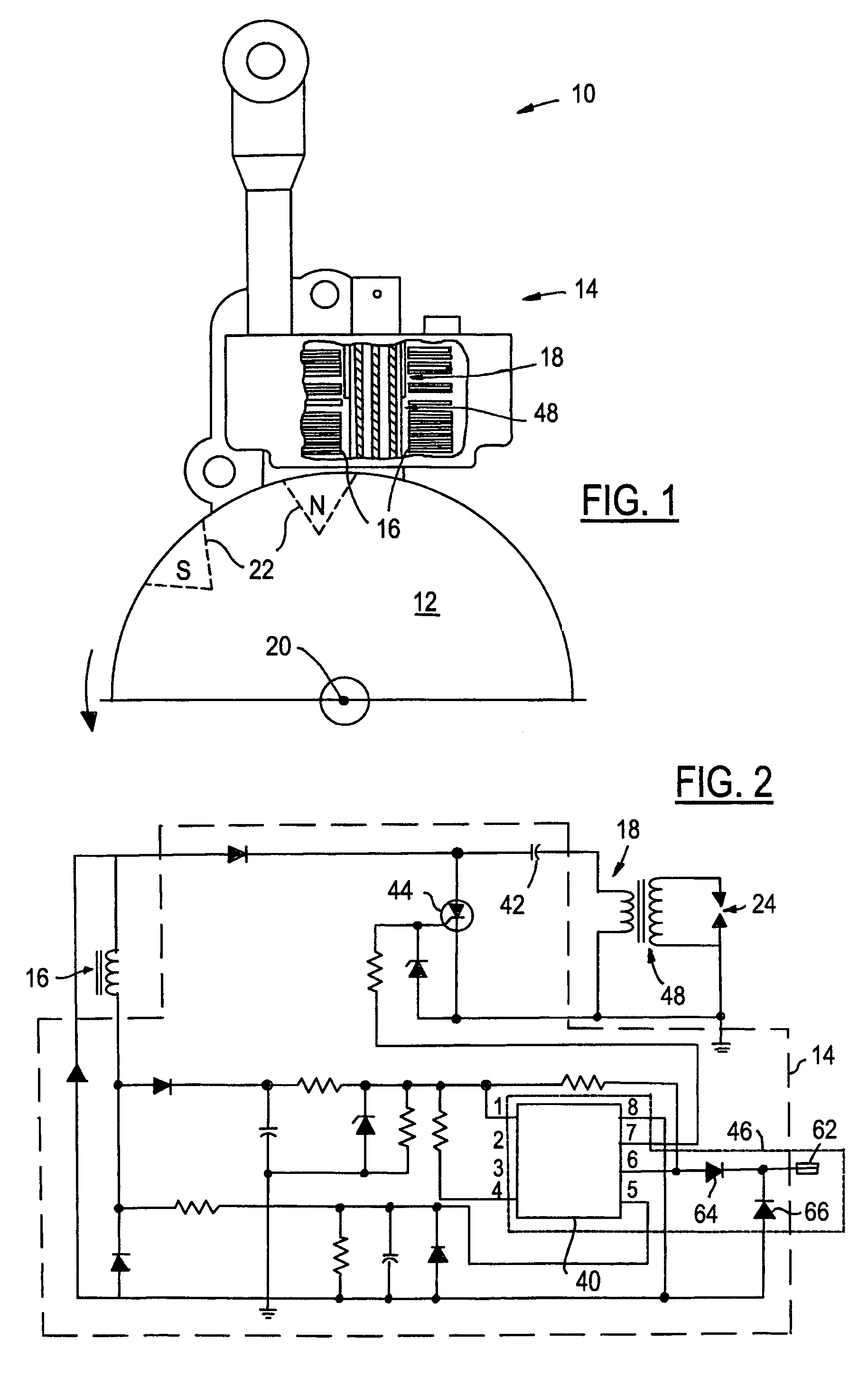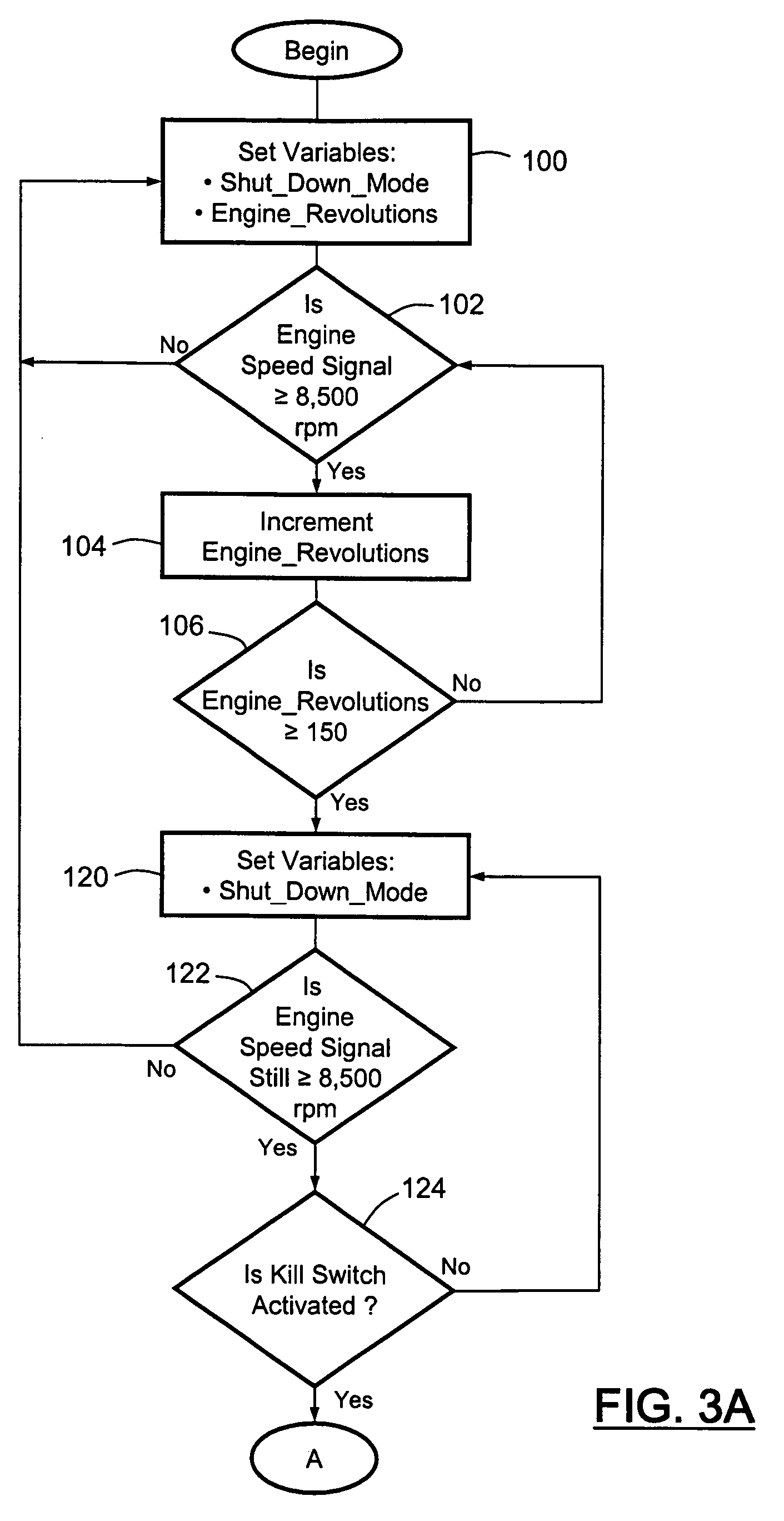Engine kill-switch control circuit and method of operating the same
a control circuit and engine technology, applied in the field of engine, can solve the problems of engine backfiring or emitted flame, engine having ‘hot spots’, engine immediate shut down, etc., and achieve the effects of reducing unburned hydrocarbon emissions, improving kill-switch responsiveness, and avoiding backfiring
- Summary
- Abstract
- Description
- Claims
- Application Information
AI Technical Summary
Benefits of technology
Problems solved by technology
Method used
Image
Examples
Embodiment Construction
[0015]Referring to FIG. 1, there is shown an example of an ignition system 10 for a light-duty combustion engine that can utilize kill-switch control circuits and controlled shut down methods of the present invention. Ignition system 10 is preferably a capacitive discharge ignition system that interacts with a flywheel 12 and generally includes an ignition timing circuit 14, an input winding 16, and a primary winding 18. The flywheel 12 is coupled to an engine crankshaft (not shown) and rotates about an axis 20 under the power of the engine. By using its rotational inertia, the flywheel moderates fluctuations in engine speed, thereby providing a more constant and even output. Flywheel 12 includes magnetic sections 22 located near an outer circumference of the flywheel. Once the flywheel is rotating, these magnetic sections 22 spin past and electromagnetically interact with input winding 16 so that a voltage proportional to the rotational speed of flywheel 12, and henc...
PUM
 Login to View More
Login to View More Abstract
Description
Claims
Application Information
 Login to View More
Login to View More - R&D
- Intellectual Property
- Life Sciences
- Materials
- Tech Scout
- Unparalleled Data Quality
- Higher Quality Content
- 60% Fewer Hallucinations
Browse by: Latest US Patents, China's latest patents, Technical Efficacy Thesaurus, Application Domain, Technology Topic, Popular Technical Reports.
© 2025 PatSnap. All rights reserved.Legal|Privacy policy|Modern Slavery Act Transparency Statement|Sitemap|About US| Contact US: help@patsnap.com



